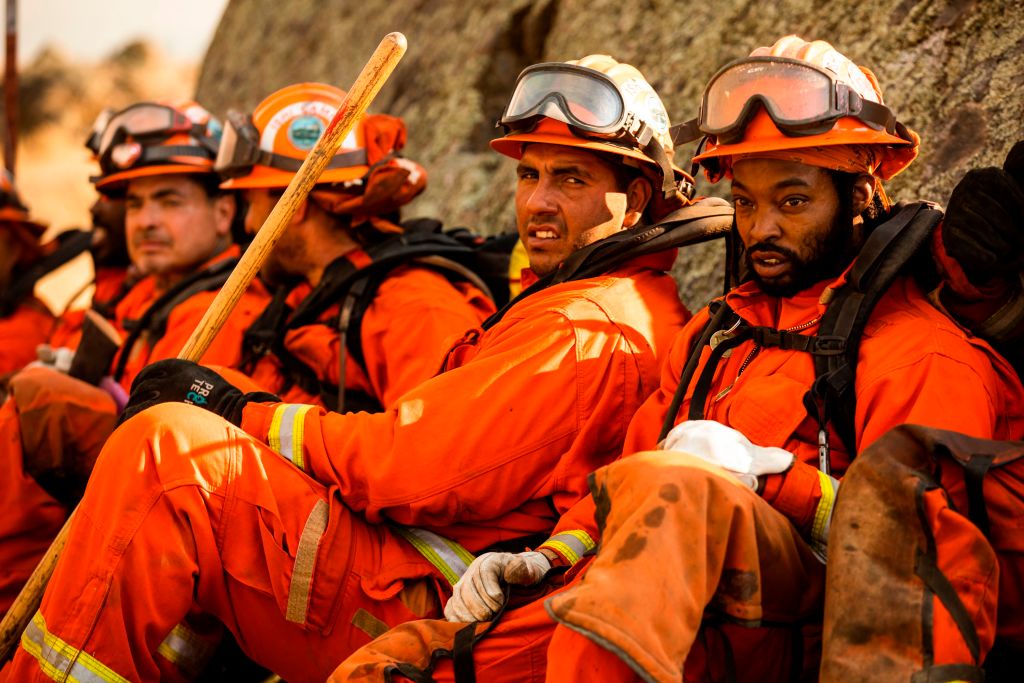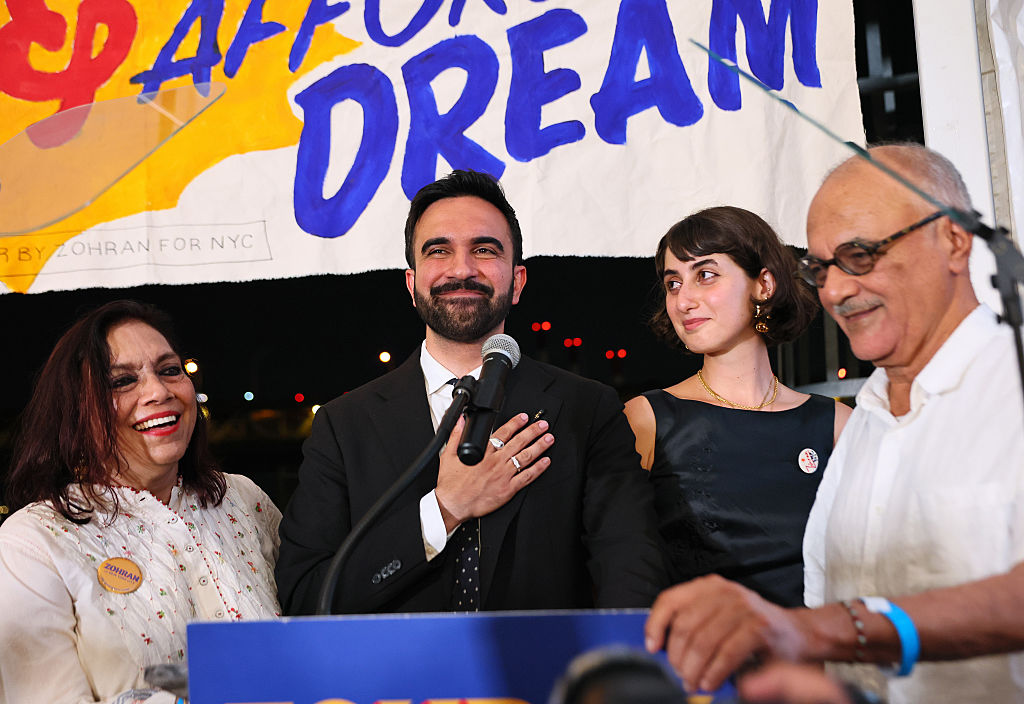California Is Slammed For Inmate 'Slave Labor' Fighting Wildfires
California Gets Called Out For Using Inmate ‘Slave Labor’ To Fight Wildfires

Source: PHILIP PACHECO / Getty
California wildfires have been a major issue these past couple of years and although efforts at putting them out have been applauded, many folks are upset by the labor being used to get the job done.
The most recent fire was the Getty Fire, which started on Monday morning in Los Angeles. This natural disaster, which is named after the nearby Getty Center, is affecting some of the higher-income areas of L.A. with stars like LeBron James being forced to evacuate their home.
Firefighters have been working diligently to put the fires out, however, what some people might not know is that California prison inmates make up a percentage of the people fighting the fires. According to ABC10, inmates have been helping fight wildfires since World War II, and inmates volunteer to receive the same entry-level training as seasonal Cal Fire firefighters. The conservation camps recruit non-violent offenders who have obeyed prison rules. The camp includes inmates trained to fight fires, but also inmates working with other skills like clearing fallen trees or debris, restoring historical structures and maintaining parks.
According to Alexandra Powell, a California Department of Corrections and Rehabilitation (CDCR) spokesperson, inmate firefighters can earn between $2.90 and $5.12 per day from the CDCR, depending on their skill level. If they’re actually in the midst of fighting fires, inmates receive an additional $1 per hour from Cal Fire, no matter the skill level. The money inmates received at training camps can be sent home or saved until they are release to parole. When fighting fires, inmates tend to work 24 hour shifts.
Inmates can also receive time off from their prison sentence by working in the conservation camps. Every one day served can translate to two days off their sentence. Even inmates in the camps who aren’t actually firefighters can earn one day or credit for every day of good behavior.
Despite these so-called perks, however, many people are not happy that California is using cheap labor to handle dangerous situations. One Twitter user wrote, “California fights fires with slave labor. Pay inmates a fair wage and allow them to get work as firefighters once they’re released. #GettyFire” Another user sarcastically wrote, “Thanks to all the prison inmates fighting the fires for basically nothing. We used to call people working for nothing a name. Can’t recall what it was.”
It’s hard not to view the inmate firefighter and conservation program as an exploitation of labor, considering they provide around 3 million hours of response to fires and other emergencies and 7 million hours in community service initiatives. This saves California taxpayers about $100 million. Meanwhile, similarly trained civilian firefighters putting their life at risk are getting paid way more. California civilian firefighters earn an average of $73,860 per year plus benefits, according to TIME.
One report obtained by TIME even shows that inmate firefighters are more likely to face certain safety risks. According to the data, more than 1,000 inmate firefighters required hospital care between June 2013 and August 2018. Inmates are also four times as likely, per capita, to suffer object-induced injuries such as bruises, cuts, dislocations and fractures compared to civilian firefighters working on the same fires.
On top of all this, inmate firefighter aren’t even guaranteed a firefighting job once they’re out of prison. Ramon Leija, a returning citizen who served time for a robbery conviction, told TIME:
“You’re not in a cell, you’re not in handcuffs or shackles or anything. You’re essentially free. That is the lucky part, but once you start analyzing the work that you’re doing and the treatment that you’re getting, and you try to transfer that out and get into an actual fire department—that is not necessarily happening.”
In California, folks convicted of felonies can’t even obtain an emergency medical technician (EMT) license until they’ve been out of prison for 10 years, says the California EMS Authority. Yet these inmates might’ve fought fires, saved lives, and risked their safety for a few dollars while still incarcerated.
Clearly, California has a lot to answer to when it comes to their incarceration and parole system.
SEE ALSO:
Everything To Know About Bryon Allen’s $20 Billion Racial Discrimination Lawsuit Against Comcast
Obama Criticizes Cancel Culture: ‘Casting Stones’ Is ‘Not Activism’















